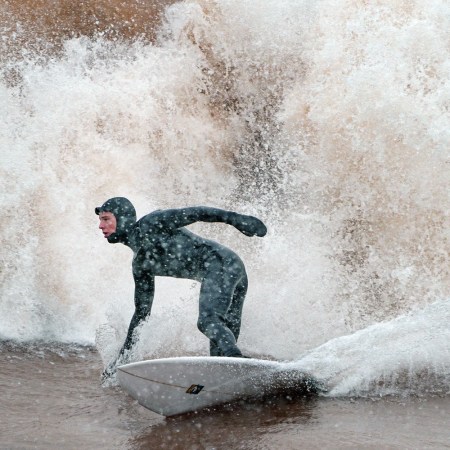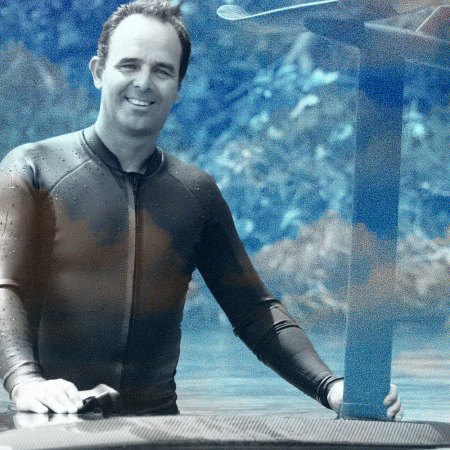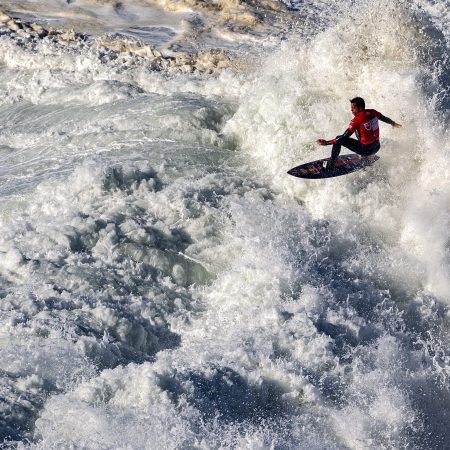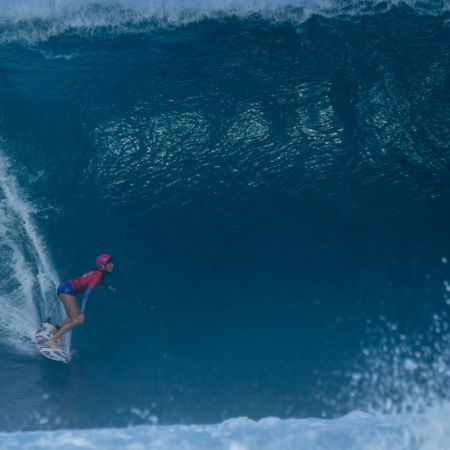On April 16, about 20 people in the small town of Emerald Isle, off North Carolina’s Crystal Coast, joined America’s growing ranks of coronavirus protesters — and they brought their surfboards along. They hit the streets protesting beach closures, raising shakas rather than fists, keeping six-ish feet apart. One carried an American flag and a sign reading “Surfing Matters.” An online petition in support of reopening the beaches attracted more than 8,800 signatures.
Michael Crews owns Hot Wax, a local surf shop. He tells InsideHook that the surf community, a tight-knit group in the already cozy island town of about 3,800, obeyed the shutdown, but felt singled out.
“Surfing is one of the last really free activities that hasn’t been oppressed by the government, and we want to keep it that way,” he says. “It’s a lifestyle. It’s a rejuvenation.” Beach access was reopened April 18. Crews, a 66-year-old man, is statistically in a high-risk coronavirus demographic, but plans on paddling out anyway.
Whenever a surfer rides a wave, those few seconds of ecstasy are the result of a days-long alchemy. You have to find the right wave, which requires the right beach, weather and tide. Then you make your move, the result of instant mental math: risk versus reward, plus timing.
Now beach communities across America are experiencing their own version of this with coronavirus, trying to time things just right by way of deliberate, calculated risk. But there are a lot of factors standing in their way: incomplete science, a patchwork governmental response and, of course, the surf community’s notorious independent streak — some keep hitting the water no matter what. The confusion can leave even the most well-informed boarder confused, and their town at risk.
“Between over-burdened hospitals, healthcare workers putting their health on the line, millions of people getting sick and thousands of people dying, temporarily avoiding crowded, public places is something we can all do to protect ourselves and others,” says Katie Day, a scientist at the Surfrider Foundation, an environmental group.
Scientists are racing to understand COVID-19, how it spreads and, hopefully, how to cure it. But big gaps remain in our knowledge of the virus, with some of them pertinent to the surfing community. Day, for example, points out that it’s still unclear if COVID-19 can survive in sewage or seawater.
Not everyone in the science community has the same take. Dr. Mark Renneker, a surfer, medical professor at UCSF and founder of the Surfer’s Medical Association, says surfing itself isn’t that risky, as long as riders keep 15 or more feet between them — which most already do. He says he still surfs most days.
“It’s stupid to go hang out in the parking lot with your buddies,” he says. “That’s going to have more risk than going out [in the water].”
Communities across the country have reached similarly different conclusions. Some have completely shut down beaches. Santa Monica deployed loud speakers and patrol cars at one point to keep people away. Puerto Rico’s beach ban carries a $5,000 fine. Hawaii, surfing’s heartland, has banned most beach use, but still allows surfing, while Santa Cruz, a surf mecca in Northern California, closed beaches in early April to avoid big crowds, then reopened in mid-April. At the beginning of May, California Governor Gavin Newsom ordered closures in Orange County, but thousands turned out to protest, and legislators soon reversed course.
“We’ve done such a great job as a community to follow the shelter-in-place guidelines that our disease burden has really stayed pretty low,” says Santa Cruz County Health Officer Dr. Gail Newel. “We felt that if we could keep the beaches and parks open, it would benefit our community both physically and mentally.”
These varying opinions leave surfers largely policing themselves. Nigel Lewis owns Rockaway Beach’s Station RBNY surf shop, a train ride away from central New York City, the epicenter of coronavirus. He’s still surfing, but worries about inexperienced riders’ impact on themselves and the system.
“If you get hurt, you’re taking a bed away from someone who needs it,” he says. “It’s about the other people they put into harm’s way.”
Even those who pack up the Subaru to travel to a remote beach pose a problem: since they’re coming in from a different community and risk spreading the virus somewhere new, they could inadvertently shut down someone else’s spot.
“During these trying times, many state parks and beaches have experienced visitation surges that make it impossible for the public to implement physical distancing,” says Adeline Yee, a spokesperson for California State Parks. Beaches across the state have been shuttered because of flocking out-of-towners, she adds.
Kevyn Dean, the national surf team’s medical director, understands surfers’ deep commitment to their craft more than most. “People surf to the core, it’s not a way to exercise,” he says. “It’s who they are and what they do. It’s their lives.” He recalls a scene at last year’s nationals when a shark appeared, briefly pausing the competition. Within minutes, some wanted back in.
Still, he’s staying home, “watching every surf movie known to man,” and avoiding travel. He’ll only surf if he’s alone. “It’s not fair to the people who live there,” he says. “There needs to be a systematic and common-sensical way of getting back in the water.”
For more travel news, tips and inspo, sign up for InsideHook's weekly travel newsletter, The Journey.






















